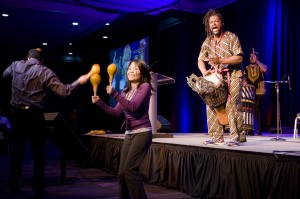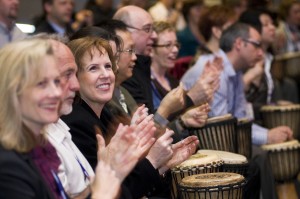Conference 2010: People, Passion, Profit
When the committee entrusted with creating the 2010 BC HRMA Conference sat down to do so, there was an elephant in the room. Was such a thing even realistic? After all, world had changed.
The economic crash had not been followed by a meteoric resurgence and none was expected. Were conference to fit into tightened budgets and uncertain timelines, it would need to integrate HR further into the fabric of our changing future.
Under the leadership of Conference Chair Harry Gray and Lynn Webb, BC HRMA’s business development director, and thanks to the efforts of committed volunteers, staff and visionary speakers, Conference 2010: People, Passion and Profit lived up to its thematic promise: New World…New Ideas.
With four generations in the workforce and greater challenge, diversity, and technology than ever before, the stage has been set for HR to step to the forefront and tap into the potential of both the profession and the bottom line.
With the conference opening to the pulse of Drum Cafe, over 800 drums were soon being struck in relative unison. A message was clearly conveyed: “This is not your grandmother’s HR.” Headlined by front line experts, critical conversationalists, renegade intra-preneurs, EQ exponents and an economist with world-changing foresight, Conference 2010 introduced all in attendance to what BC HRMA CEO Simon Evans rightly dubbed, “The HRevolution.”
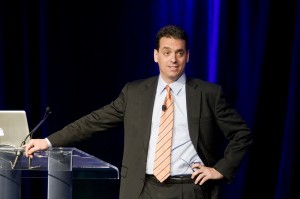 The Drive Behind A Whole New Mind
The Drive Behind A Whole New Mind
Headline speaker and author Daniel Pink would argue that while the Industrial Revolution sent shockwaves through the blue collar culture, the Technological Revolution has changed the working world en masse across every spectrum of collared hue.
Pink does not think in terms of blue and white collars. As the author of A Whole New Mind and Drive, he thinks in terms of bigger pictures: cultures, memes, trends. He does however, foresee a marked return of right brain thinking.
“Growing up the context of success was different. It was all about the getting the grades, getting into the right university and pursuing a profession that would provide financial security. This was the rational path of professionals and the entire apparatus of our culture was built around it,” said Pink. “Today, a different set of skills and mindsets prevail and it affects HR in many ways.”
“The left brain does specialize in logic and linearity while the right handles different processes and deals with synthesis. Traditionally, the most important work abilities were anchored in the left brain attributes. Those abilities are still essential, but are no longer sufficient,” said Pink. “Now artistry and empathy define those who move forward.”
In fact, empathy is just part of Pink’s plan for getting it ‘right’ both in boardroom and the bottom line. Design, story, symphony, play and meaning all need to be revisited in Pink’s paradigm.
“There are three basic causes calling for a change in how we work: Asia, automation and abundance,” explained Pink. “The scariest word in the language of work these days is routine. Any routine work can be reduced to a script or a formula. It becomes a commodity and therefore is no longer as valuable and can be shipped out. With the growth of global economies as India you can count on a lot more routine white collar work vanishing like mass production work did decades ago.”
What remains of competitive advantage is to be found within HR’s domain: people and the power of innovation.
“There is a premium in giving people something they didn’t know they were missing,” said Pink. “Focus is important but seeing the big picture, connecting the dots is more important. If there is one key predictor of star performance it is the ability to draw those connections.”
While connecting the dots provides the perspective, business coach Geoff Affleck has been helping businesses and individuals, put the big picture into motion.
“There is an obvious link between passion and revenue,” said Geoff Affleck in his presentation on Connecting People, Passion and Profit. “Engaged people are the best source of innovation and customer service. From the boomers to Gen Y, everyone needs to be connected to the mission and have a passionate purpose.”
The challenge, according to Gallup studies and Towers-Perrin surveys, is that a disproportionate percentage of employees lack that essential passion. In fact, only 29 percent of employees are actively engaged. A full 50 percent would tale a pay cut for greater meaning in their work and two out of 10 are poisoning your entire team’s productivity.
While the actively engaged employees are credited with accounting for an average $32,000 in additional revenue, those disengaged employees hurt the bottom line more than employers realize.
Working with Chris and Janet Atwood’s book, The Passion Test, Affleck helps companies align their core vision with their core passions. The synergistic process is relatively simple yet challenges leaders to engage their workforce from an entirely different perspective. Creating a culture that cares about the business, does wonders for business.
Fl!pping Forward the Brand Concept
Recognizing that culture as a brand that is either selling or not selling 24/7 in an online global marketplace is essential if HR professionals are to realize the magnitude of the opportunity ahead. From caretakers to catalysts of culture: the opportunity awaits and the necessity is apparent within an increasingly competitive labour pool.
“If your brand is somewhere in the middle, you are nowhere,” said Peter Sheahan. As a corporate branding guru and author of Flip! he has championed the power of counterintuitive thinking. The only answers worth finding are the ones to questioned yet unasked.
Sheahan’s own model draws into question name, positioning, style, culture work and association. Who are we? Who cares? How do we act? What’s it like? What do we do? How are we perceived? The key is not the model. The key is the gaps revealed.
“Acknowledging the cognitive dissonance is key. A powerful brand will create a gap between where you are and where you want to be,” said Sheahan. “The value proposition between both your customers and your employees begins with building a strong brand around three concepts: the current perception, the current reality and the desired future brand.”
Associations are the keystones of all brands according to Sheahan. Identifying associations not commonly associated with your business and leveraging them to your advantage is the key.
Working Wonders with Web 2.0
“Don’t rebuild the world. Tap into it,” said Sheahan. “That’s brand thinking. Once you ask the questions and align your efforts, you can save a lot of money and time in retention and recruitment.”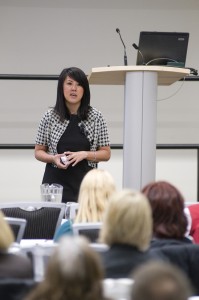
The same automation that has created burgeoning IT demographics worldwide has also provided HR with a suite of Web 2.0 technologies that provide both savings and strategic advantage.
Working with the DC public relations firm APCO, Jessica Lee has discovered just how ‘tweet’ that toolkit can be. In less than three years, since first happening upon the HR Capitalist blog, she has revolutionized her company’s hiring processes and emerged as a sought after ‘accidental-thought leader’ for her social media savvy.
Where Lee saw the potential of social media and has since brought that potential forward is within the realms of employment branding, candidate sourcing and community building. Factoring Twitter into her recruitment efforts, Lee rapidly proved the ROI of so-called ‘social’ media, raising the percentage of new hires attributable to social media from nine to 25 percent between 2008 and 2009. During the same period, she saved APCO considerable sums by reigning in their costs and reliance upon external hiring boards and agencies.
For all the company success and professional exposure it has won her, Lee admits, “I did it for the sake of doing it. Everything I did was pretty much on my own, experimenting and getting things done on the cheap.”
Such narrative and illustration of the People, Passion, Profit connection was woven throughout the three-days. It was it also celebrated during the awarding of the Rising Star Award, Awards of Excellence and the FCHRPs.
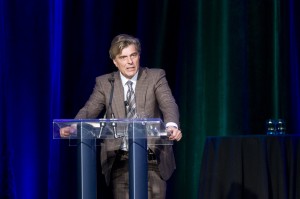 Global Thinking, Local Solutions & EQ
Global Thinking, Local Solutions & EQ
On the closing day the three P’s were pretty much mandated by a fellow that for 20 years served as the CIBC’s chief global financial adviser. Jeff Rubin is the author of Why Your World Is About to Get a Whole Lot Smaller. He foresees a global shift towards localized economies paralleling the decline of the global economy’s access to affordable fossil fuel. This shift brings with it a re-emergence of localized manufacturing and Rubin sees the ‘barista culture” coming to an end as new opportunities return from decades of being off-shored. Again, this puts HR in a crucial position: helping reframe the context of work itself.
Fortunately, while their may be a limit to the oil reserves, the limits to people potential are only beginning to be explored. For self-styled ‘renegades’ such as Christine Comaford, a one-time monk and former Microsoft serf turned entrepreneurial maven, the innovation factor will continue to unfold futures yet unseen. The key for Comaford, as well as seminal presenters Joseph Grenny and J.P. Pawliy-Fry, is to build emotional equity.
“HR is the strategic weapon of the organization. You are the people behind the people and you know the value of passionate people,” said Comaford. “I believe leaders have to elevate others and set an example. I believe you need a GSD (Get Stuff Done) more than an MBA. You need emotional equity with your intellectual capital. Accountability, commitment, initiative and ownership: all are key to EQ.”
“Emotional equity is when someone else takes your success personally. It comes from putting energy into people and earning their trust so that they come to you both for help and with ideas,” said Comaford. Fortunately, a few simple phrases go a long way in developing that EQ. Comaford calls them the Fab Four: “Please”, “Thank you”, “I’m sorry” and “I don’t know”.
Mastering Crucial Conversations
Such authenticity is not always easy.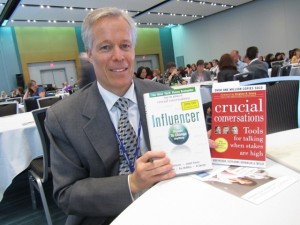
According to the multi-faceted author and presenter Joseph Grenny, that type of communications requires hard work and calm nerves. Building upon the wisdoms and lessons compiled within Crucial Conversations and Crucial Confrontations, Grenny addressed the Conference 2010 crowd not once, but three times to bring his message home: nothing is resolved if nothing is addressed in a fitting fashion.
“What are the consequences of dealing or not dealing with issues in our lives or at work?” he asked. “The thing I find most interesting is that core leaders tend to be quick responders when it comes to crucial conversations and confrontations. The goal with the first is to find agreement and with the second to affect a change.”
The key to successfully managing crucial conversations is two-fold: learning to master the instinctive fight or flight instinct and most importantly, picking the right problem to address.
“The key is to de-bundle before we enter the conversation. As soon as we open our mouths we pick a topic and it is not always the one we wanted to address,” said Grenny. “We need to look at the content of the immediate problem, the pattern or consistent behaviour and the nature of the relationship. Focussing on what we really want is crucial to intelligent confrontation, especially when we are seeing red with anger.”
Grenny admits it sounds easier in presentation than in the heat of the moment. As echoed by the conference closing comments of J.P. Pawliw-Fry, our brains are hardwired to sabotage our best attempts at maintaining cool cognizance in crucial moments. Pushing past the instinctive fight or flight response to find common ground requires practice, but is critical to sustained leadership.
“It is important that your impact is always in line with your intention. This is at the core of the approach-avoid paradox. When we face a challenge like this we undergo an amygdala hijack which pushes us, if we let it, towards silence or violence. In this state, we make more errors, decrease our working memory, erode neurons and create an internal toxic state,” said Fry.
“Being our best in our difficult moments is a real challenge. With the demographic shifts at play, HR is going to have very real challenges and opportunities. If you are avoiding crucial conversations, you are going to lose your leader status.”
For further Conference 2010 articles, visit www.hrvoice.org or explore BC HRMA’s online community at www.bchrma.org and mark your calendars now for Conference 2011: Complexity Made Simple to be held April 13-15, 2011 in Vancouver.
(PeopleTalk: Summer 2010)


